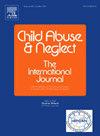Messaging to promote the public's understanding of child sexual violence as preventable, not inevitable
IF 3.4
2区 心理学
Q1 FAMILY STUDIES
引用次数: 0
Abstract
Background
Many people in the United States view childhood sexual violence (CSV) as unpreventable, which can inhibit funding for interventions and policy related to CSV prevention.
Objective
In response to widespread fatalism that CSV is inevitable, we developed and tested language to promote public perceptions of CSV as preventable.
Methods
Twenty-two communications frames were developed by experts in the field and then evaluated through two waves of online surveys. Participants and Setting: We collected data from a nationally representative sample of 5389 people in the United States.
Results
Results suggest two types of tested language (i.e., frames) were most impactful in shifting thinking toward prevention. The frames that included treatment-focused information including providing real interventions to people with sexual attraction to children shifted public thinking toward CSV prevention (e.g., frame that described an available perpetration prevention program from a third-person perspective (β = −1.79, p = .001)). Additionally, an education-focused frame decreased concerns about why CSV cannot be prevented (β = −2.21, p < .001) increased support for collective efficacy to prevent CSV and reduced a focus on costly and ineffective policies as evidenced by written responses.
Conclusions
Findings suggest that with relatively brief, targeted frames, advocates, practitioners, and researchers can help shift public perceptions about CSV. Further testing and development is needed to assess the longevity of these effects and whether additional priming or supplemental information is required to sustain perceptions of CSV as preventable. Ultimately, this study resulted in development of tools, resources, and training necessary to make the case for CSV prevention research funding and to inspire collective action. Together, we can shift the narrative and demonstrate that CSV prevention is both necessary and possible.
传递信息,促进公众认识到儿童性暴力是可以预防的,而不是不可避免的。
背景:许多美国人认为儿童性暴力(CSV)是不可预防的,这可能会抑制与CSV预防相关的干预措施和政策的资金。目的:为了回应普遍存在的CSV是不可避免的宿命论,我们开发并测试了语言,以促进公众对CSV是可预防的看法。方法:由该领域的专家制定了22个沟通框架,然后通过两波在线调查进行评估。参与者和环境:我们从美国5389人的全国代表性样本中收集数据。结果:结果表明两种类型的测试语言(即框架)在将思维转向预防方面最具影响力。包含以治疗为重点的信息的框架,包括向儿童性吸引力的人提供真正的干预措施,将公众的思维转向了CSV预防(例如,从第三人称角度描述可用的犯罪预防计划的框架(β = -1.79, p = .001))。此外,以教育为重点的框架减少了人们对为什么CSV无法预防的关注(β = -2.21, p)。结论:研究结果表明,通过相对简短、有针对性的框架,倡导者、从业者和研究人员可以帮助改变公众对CSV的看法。需要进一步的测试和开发来评估这些影响的持续时间,以及是否需要额外的启动或补充信息来维持CSV是可预防的观念。最终,这项研究导致了工具、资源和培训的发展,这些都是为CSV预防研究提供资金和激励集体行动所必需的。我们可以一起改变叙述,并证明预防CSV是必要的和可能的。
本文章由计算机程序翻译,如有差异,请以英文原文为准。
求助全文
约1分钟内获得全文
求助全文
来源期刊

Child Abuse & Neglect
Multiple-
CiteScore
7.40
自引率
10.40%
发文量
397
期刊介绍:
Official Publication of the International Society for Prevention of Child Abuse and Neglect. Child Abuse & Neglect The International Journal, provides an international, multidisciplinary forum on all aspects of child abuse and neglect, with special emphasis on prevention and treatment; the scope extends further to all those aspects of life which either favor or hinder child development. While contributions will primarily be from the fields of psychology, psychiatry, social work, medicine, nursing, law enforcement, legislature, education, and anthropology, the Journal encourages the concerned lay individual and child-oriented advocate organizations to contribute.
 求助内容:
求助内容: 应助结果提醒方式:
应助结果提醒方式:


